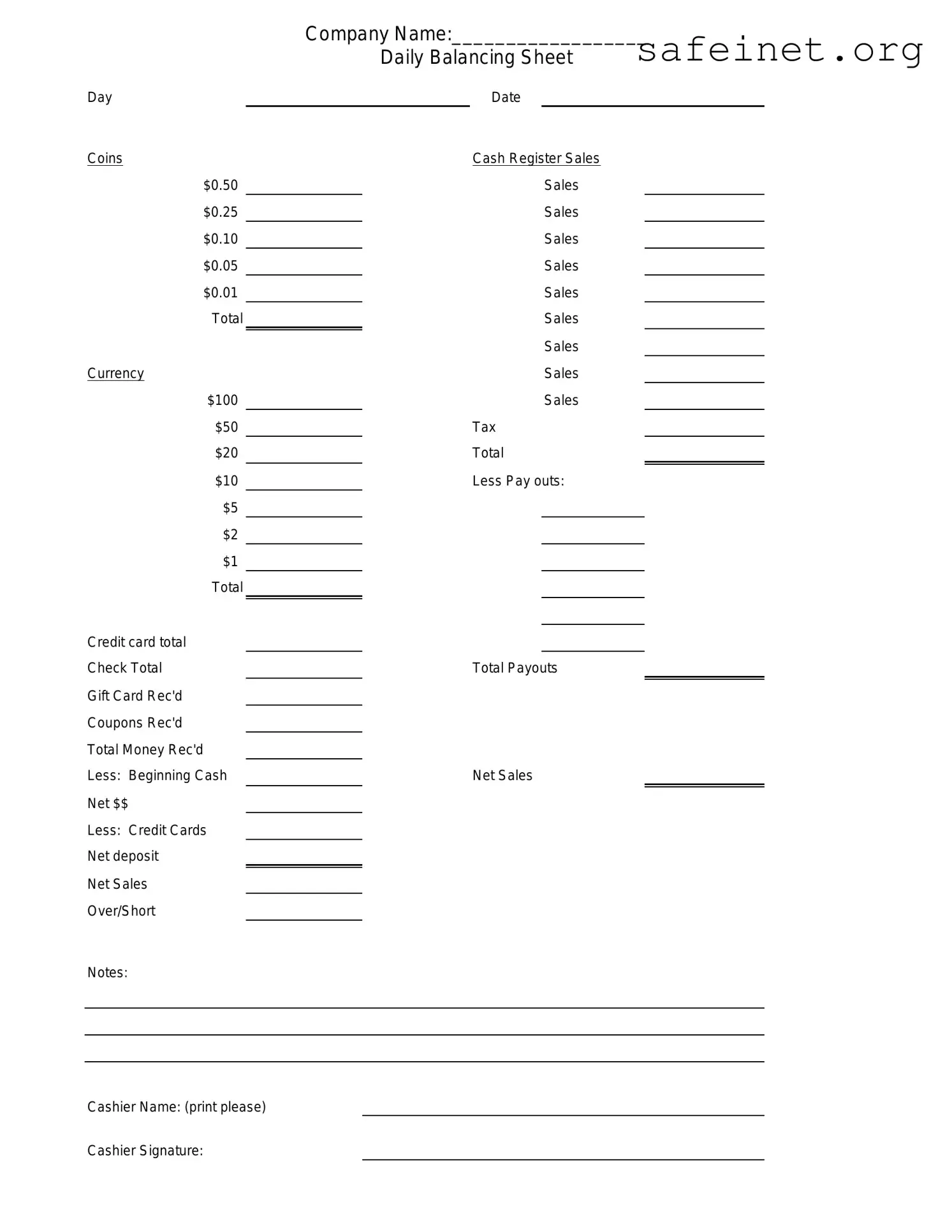What is a Cash Drawer Count Sheet?
A Cash Drawer Count Sheet is a form used to track and record the cash present in a cash drawer at the end of a shift or business day. This sheet helps ensure that the cash total matches what is expected based on sales and transactions. It serves as an important tool for financial accountability in retail operations.
Why is it important to use a Cash Drawer Count Sheet?
Using a Cash Drawer Count Sheet is crucial for several reasons. First, it promotes accuracy in cash handling, helping to prevent discrepancies. Second, it ensures that all cash transactions are properly accounted for, reducing the risk of theft or loss. Finally, it provides a clear record for audits and financial accountability, which can be essential during tax season or financial reviews.
How do I fill out a Cash Drawer Count Sheet?
To fill out a Cash Drawer Count Sheet, start by entering the date and the name of the person conducting the count. Next, you will need to list the denominations of bills and coins in the drawer, such as $1s, $5s, $10s, etc. Count each type of currency, record the quantity, and calculate the total for each denomination. Finally, sum all the totals for a final cash count, and review it to ensure accuracy.
What should I do if there is a discrepancy in the cash count?
If you find a discrepancy between the counted cash and the expected total, first double-check your counts and calculations. If the discrepancy remains, investigate recent transactions for potential mistakes or unauthorized removals. Document all findings and discuss them with your supervisor. Maintaining accurate records can help resolve issues more effectively.
How often should I complete a Cash Drawer Count Sheet?
A Cash Drawer Count Sheet should be completed at the end of each shift or business day, or any time there is a change in cashiers. Consistent use of the form helps maintain accountability and reduces the chance of errors accumulating over time. It's advisable to create a routine around its use to ensure thorough cash management practices.

